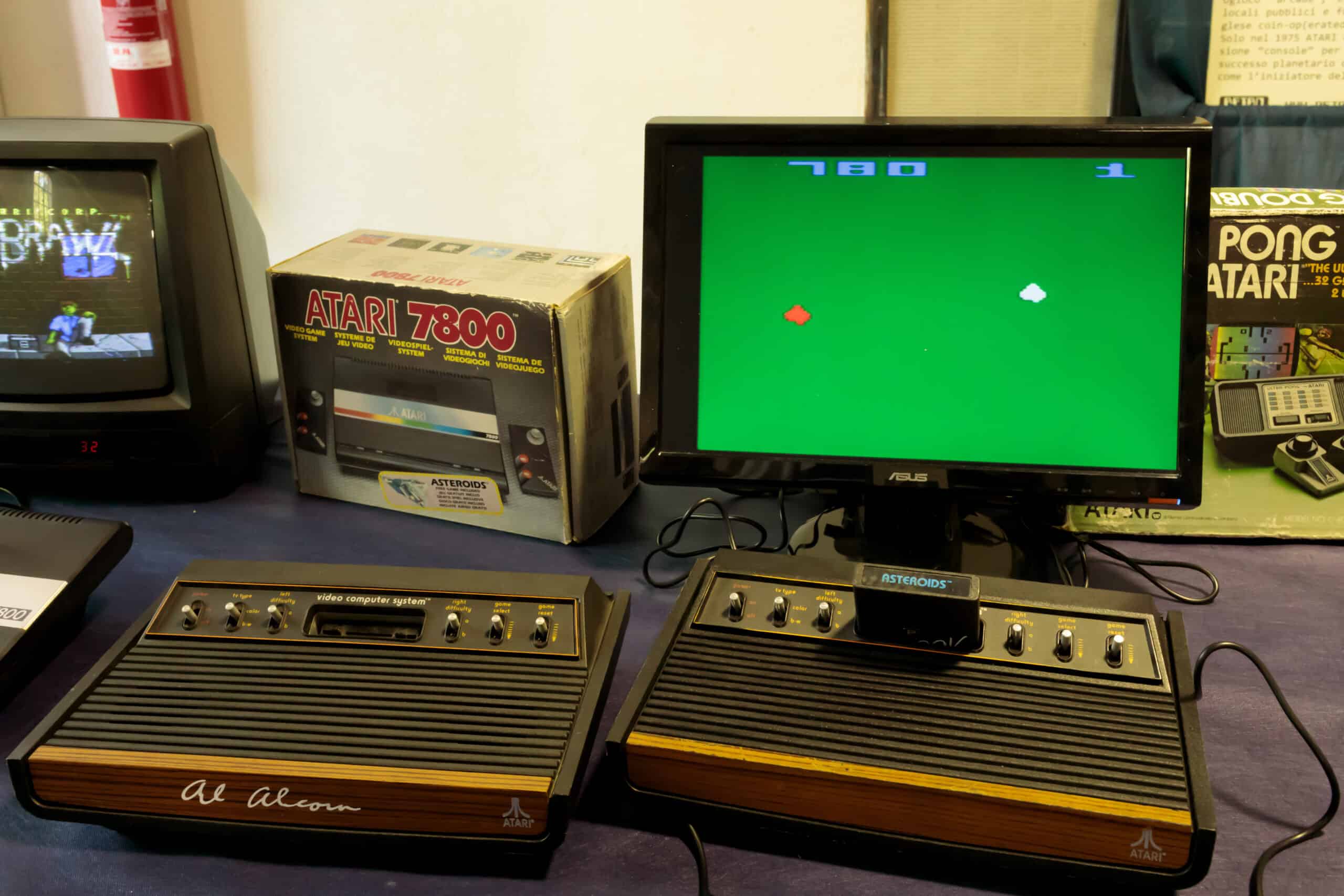Before the PlayStation 5, the Xbox Series X/S, or the Nintendo Switch, video games existed in a much more simple form. No flashy graphics, no online multiplayer mode, no crazy controls… in some cases, just lines and dots. That’s all there was to it. And yet, the power and the excitement of the early technology was enough to launch an industry now worth more than a quarter of a trillion dollars annually. With this in mind, what are the oldest video games ever made? Let’s look at the ten titles that started it all.
The History of Video Games
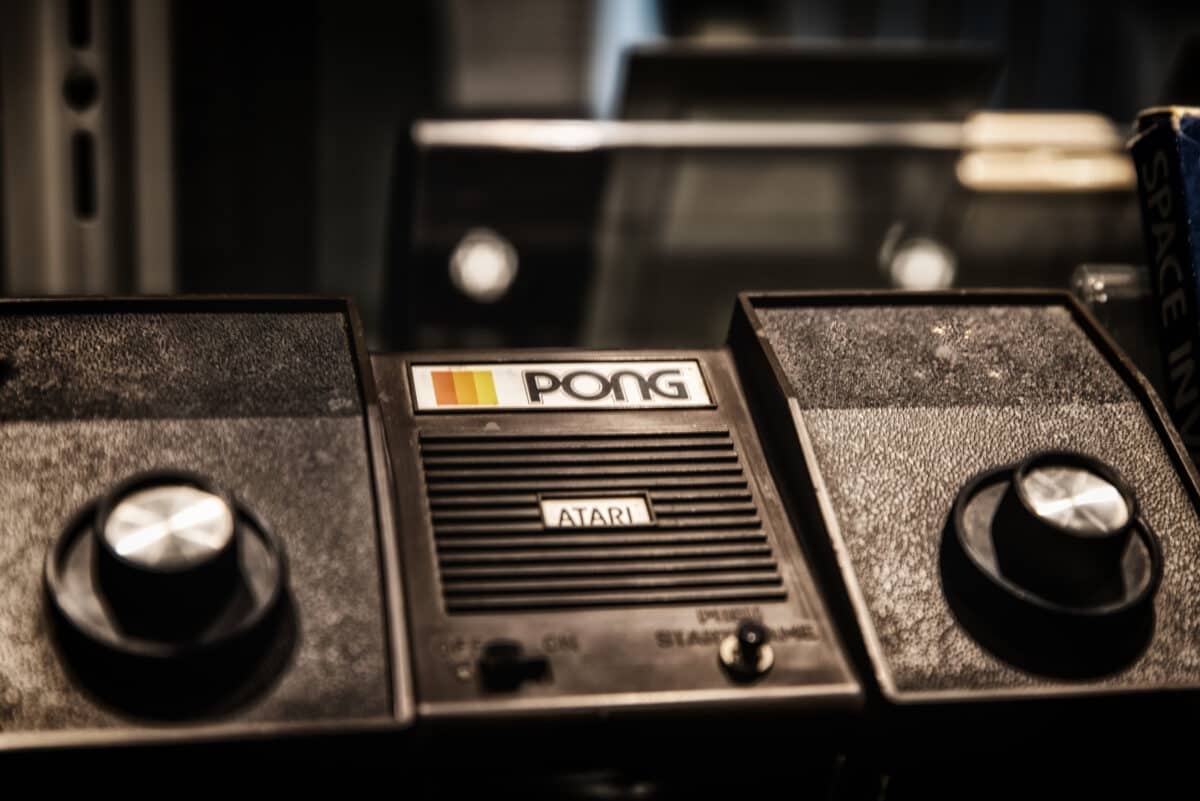
Pong
is often incorrectly regarded as the first video game, but decades of history precede it.The early history of video games spans back to the late 1940s. This was when the first interactive game with an electronic display was invented — way back in 1947. However, these early video games were not only very rudimentary but also extremity limited — most to a single scientific research lab. In other words, they hardly count as video games in the traditional sense: an interactive single- or multi-player electronic game on a digital display with its own dedicated input device.
Games fitting this description didn’t arrive until later in the 1950s and early ‘60s. As we’ll learn below, Tennis for Two was the first — and oldest — video game of its kind. However, a number of prototypes pre-date even Tennis for Two. Examples include Bertie the Brain, OXO, and a number of other super-simple programs made to show off basic computer concepts and principles in development at the time. Alas, these weren’t explicitly for entertainment. Tennis for Two marked the first time an early video game was made with entertainment as the first priority.
As the ‘60s gave way to the ‘70s, the stage for the video game industry as we know it had officially been set. Pong certainly wasn’t the first video game, but it was undoubtedly the first one to truly take the world by storm. This game, paired with the Magnavox Odyssey console, marked the true beginning of the video game industry. From this point onward, the video game industry would grow to become the multi-billion-dollar industry we know and love today.
The 10 Oldest Video Games On Record
With this history understood, let’s journey back to the origins of video games and explore the ten oldest titles. Each one of these oldest video games on record played an important part in paving the way for the far more advanced games we play today. While they may look basic by today’s standards, they nevertheless hold a special place in the history of gaming. They mark the very beginning of a technological revolution that has captivated the minds of players around the world.
10. Space Race (1973)

Space Race
was one of Atari’s earliest successes.| Developer | Atari, Inc. |
| Publisher | Atari, Inc. |
| Designer | Ted Dabney |
| Platform | Arcade |
| Released | July 16th, 1973 |
Like so many of the early video games on this list, Space Race is an extremely straightforward video game. It’s exactly what the title suggests: a competitive two-player race between two rival spaceships. Both players control their own spaceship, the goal being to stay ahead of the competition, avoid the obstacles on-screen, and reach the finish line before their opponent.
Space Race marked Atari’s second-ever release. It was highly anticipated, especially given the sheer amount of success and acclaim surrounding their first release Pong. It was also a huge step up over Pong, technologically speaking, as it involved a lot more complicated and exciting gameplay than its spiritual predecessor.
9. Pong (1972)
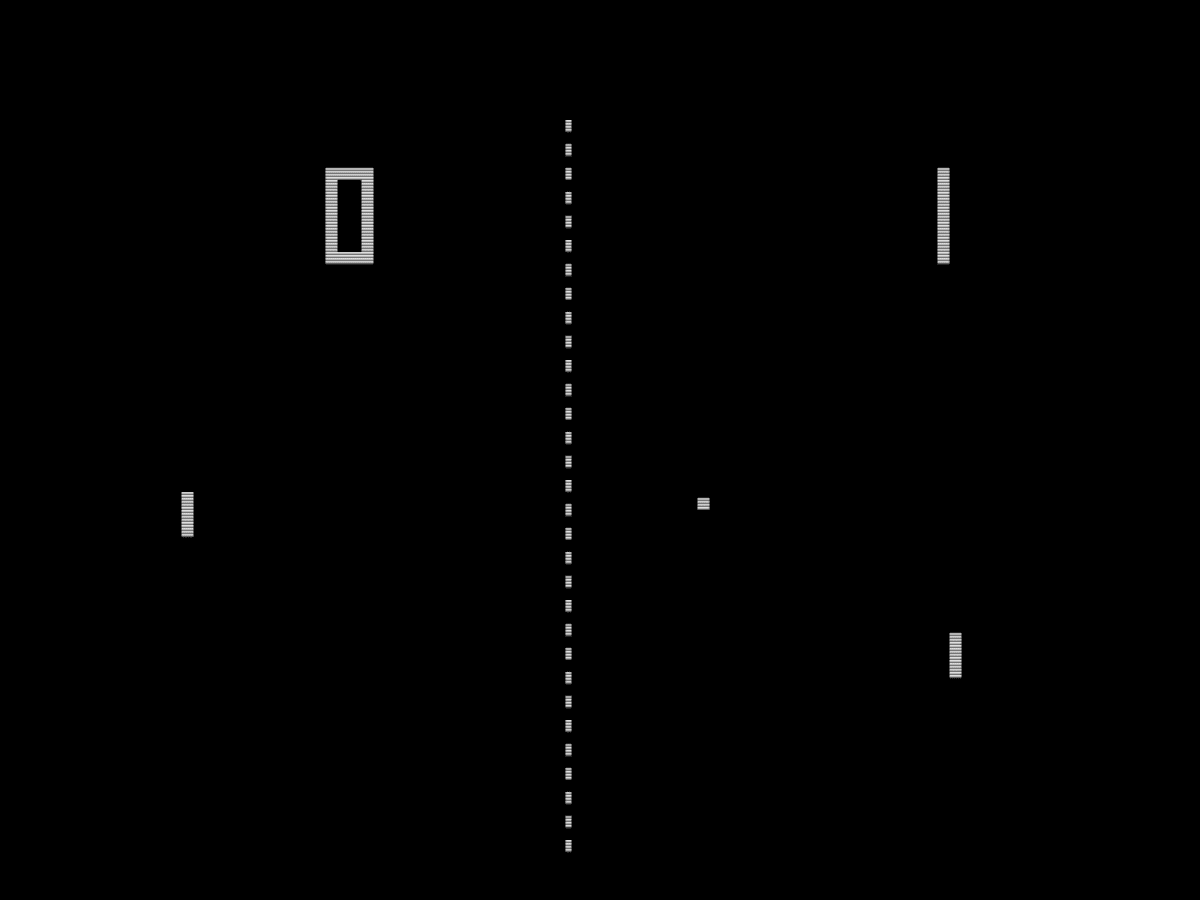
Pong
, Atari made a real name for itself in the video game industry.| Developer | Atari, Inc. |
| Publisher | Atari, Inc. |
| Designer | Allan Alcorn |
| Platform | Arcade Dedicated console |
| Released | November 29th, 1972 |
Pong hit arcades in 1972. As one of the most iconic video games in history, many naturally presume it was also the first video game ever released. However, it was actually released nearly 15 years after the first-ever video game made purely for entertainment purposes was released. Though it wasn’t the first, it was still one of the most successful.
Even if you’ve never played it before, you probably know that Pong is nothing more than a simple two-player table tennis simulation. The game’s controls are just as basic: two players control paddles on opposite sides of the screen and hit a ball back and forth. If someone misses the ball and it passes their paddle, it’s a point for the opposing side.
8. The Magnavox Odyssey Library (1972)

| Developer | Sanders Associates |
| Manufacturer | Magnavox |
| Platform | Home video game console |
| Released | September 1972 |
For all intents and purposes, the Magnavox Odyssey was the first video game console ever. It contained not one but a dozen different games in its library. Uniquely, the console required users to place plastic overlays on the television screen and came with other tangible interactive elements such as paper money and dice.
As to be expected, these Magnavox Odyssey games were super simple and easy to play. Some of the more popular titles included Table Tennis, Football, and Shootout, among numerous other available games. The Magnavox Odyssey library showcased the immense potential promised by further development of the home gaming industry.
7. The Oregon Trail (1971)
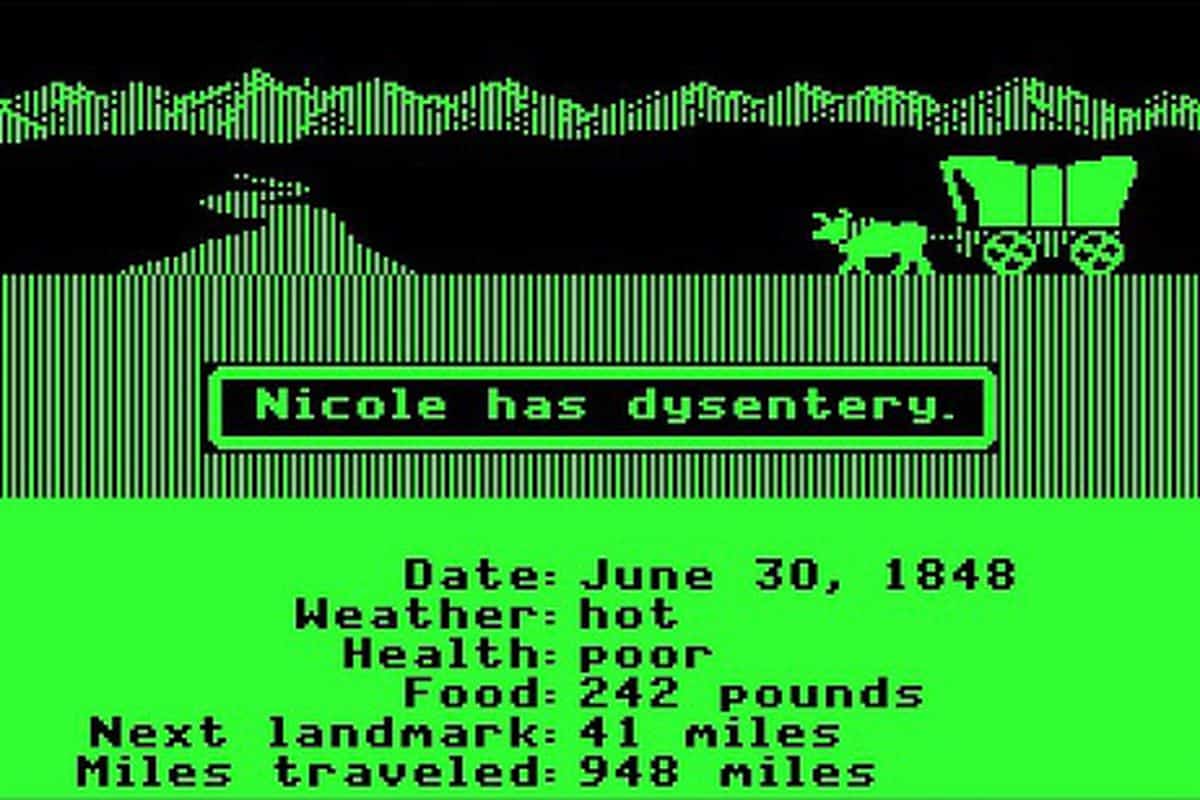
The Oregon Trail
is still ongoing today.| Developers | Don Rawitsch Bill Heinemann Paul Dillenberger |
| Publisher | Minnesota Educational Computing Consortium |
| Platform | Computer |
| Released | December 3rd, 1971 |
The Oregon Trail is another early video game classic that you’ve likely played at least once in your life before. First developed in 1971, this educational computer game attempts to emulate the experience of Western pioneers traveling the Oregon Trail in 19th-century America. It’s a pillar of the early “edutainment” movement.
In The Oregon Trail, gamers must strategically manage resources, make smart decisions, and navigate difficult challenges on their westward journey if they want to survive through to the end. The magnitude of the game’s success can be seen in the continued development of new versions still to this day.
6. Computer Space (1971)

Pong
isComputer Space.
| Developer | Syzygy Engineering |
| Publisher | Nutting Associates |
| Designer | Nolan Bushnell Ted Dabney |
| Platform | Arcade |
| Released | Holiday season 1971 |
Computer Space came out in 1971. Despite the titles still to come on this list, it’s Computer Space that is most often called the first commercially available arcade video game. This one-player space combat game asks the player to control a spaceship and shoot down incoming flying saucers. Kind of like Space Invaders or Galaga, but simpler.
Computer Space was developed by Nolan Bushnell and Ted Dabney. These two important figures in the early history of video games later went on to start Atari. When viewed through this lens, Computer Space effectively set the stage for the arcade gaming industry by introducing interactive entertainment to the public.
5. Galaxy Game (1971)

Galaxy Game
is one of several early sci-fi video games on this list.| Designer | Bill Pitts Hugh Tuck |
| Platform | Arcade |
| Released | November 1971 |
Also launched in 1971 was Galaxy Game, arriving mere weeks before the previous two entries on this list, Computer Space and The Oregon Trail. First developed by students at Stanford University, Galaxy Game is yet another space combat game. But, unlike Computer Space, this one’s for two players instead of one.
Still, the basic concept is more or less the same. Both players control a spaceship of their own — one needle-shaped, one wedge-shaped — as they engage in battles with enemy flying objects. Interestingly enough, it is an expanded version of the second-oldest video game on this list. (More on that one later.)
4. Speedway (1969)
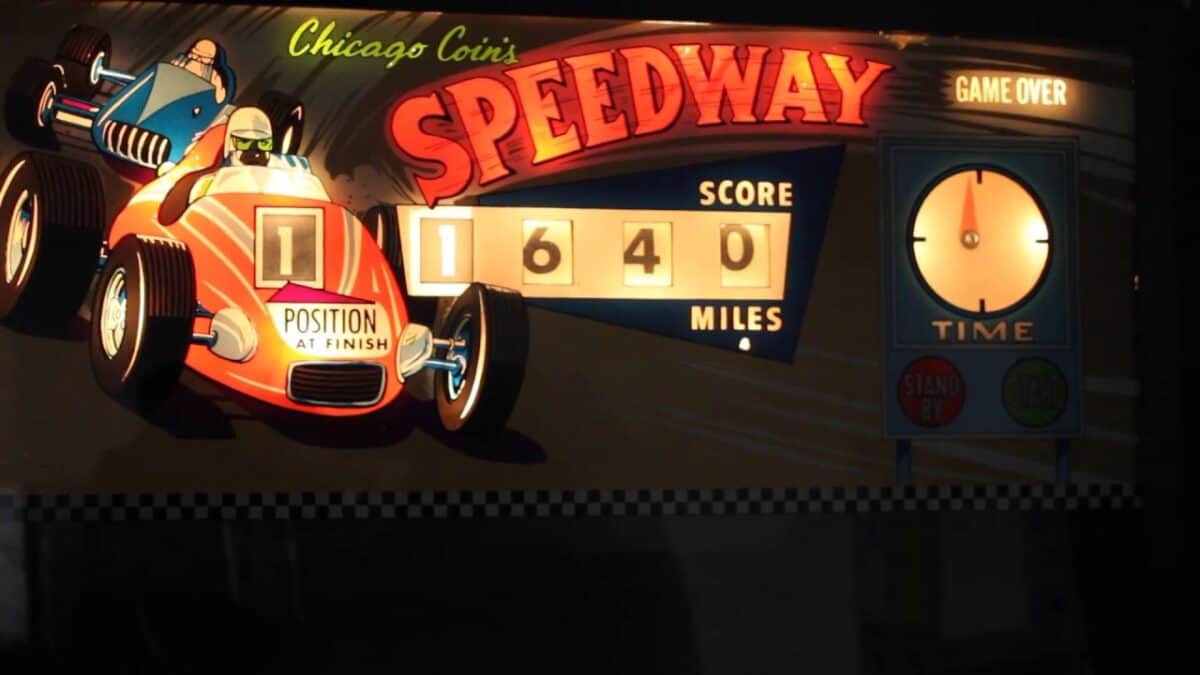
Speedway
blurred the line between arcade attractionsand video games
.| Developer | Chicago Coin Machine Co. |
| Platform | Arcade |
| Released | 1969 |
In the earliest days of video games, titles were a mix of both electrical and mechanical elements. Speedway, released in 1969, is a great example of this. An arcade racing game with a movable wheel, Speedway saw players controlling a car on a curved track filled with other obstacles. The goal was to finish the race before the clock ran out.
Speedway is one of the earliest racing games, if not the very first of its kind. Its success in arcades nationwide helped contribute to the further development of interactive video entertainment beyond the purely mechanical games that came before it. Its gameplay might not have been very complex, but it set the stage for far more advanced tech down the line.
3. Periscope (1966)
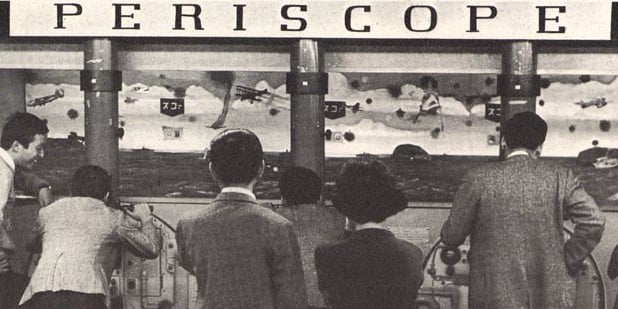
Periscope
showed off Sega’s forward thinking.| Developer | Nakamura Manufacturing Co. Sega |
| Designer | Masaya Nakamura David Rosen Shikanosuke Ochi |
| Platform | Arcade |
| Released | 1966 |
In 1966, Periscope changed arcades forever. Like Speedway, it was a super simple arcade game that paved the way for more complex iterations in the future. This submarine-themed game required players to gaze through a periscope and fire at ships and planes that appeared on the screen. (An early version of the target shooting games found in so many arcades today.)
The game was designed by one major developer you might recognize the name of: Sega. The success of Periscope not only bolstered the blossoming video game industry but also the Sega company itself. Considering all that was to come because of Periscope’s success, the game ends up looking a lot more significant than its simple premise would suggest.
2. Spacewar! (1962)
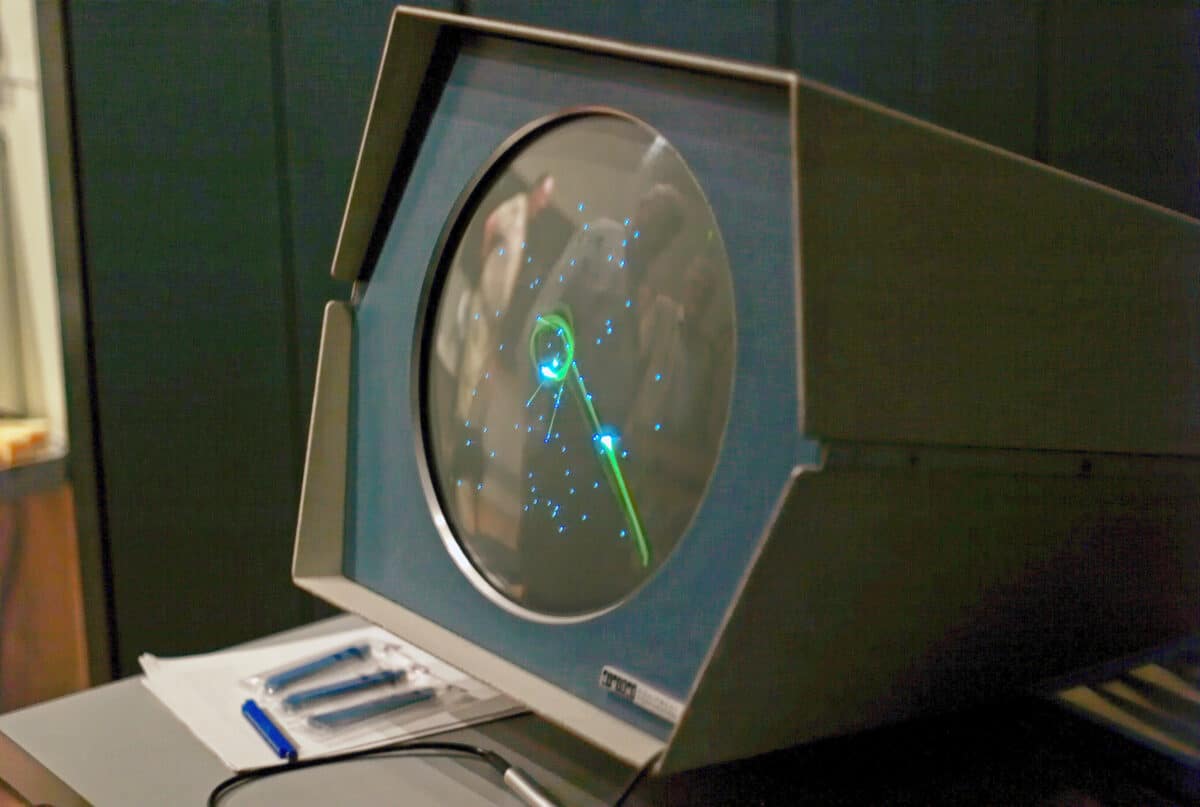
Spacewar!
broke new ground for the video game industry.| Designer | Steve Russell |
| Platform | Computer |
| Released | April 1962 |
While we’ve spent a lot of time talking about arcade games on this list, Spacewar! stands out for being one of the very first digital computer games ever. Developed in 1962, the two-player game sees users control their own spaceships as they engage in a series of exciting (albeit basic) outer-space battles.
If it sounds like Galaxy Game, it’s because Galaxy Game borrowed heavily from this title. But, while Galaxy Game came from Stanford, Spacewar! came from students at the Massachusetts Institute of Technology (MIT). It was foundational in the further development of both video games and video gaming technology.
1. Tennis for Two (1958)

Tennis for Two.
| Designer | William Higinbotham |
| Platform | Computer |
| Released | October 18th, 1958 |
First created in 1958, Tennis for Two is the oldest video game in history (that we know of). Beyond one-off lab tests and simple technological demonstrations limited to sole locations, Tennis for Two was the first video game purely for the purpose of entertainment. Everything that came before it — such as Bertie the Brain or OXO — were simple exhibitions by comparison.
Played on an oscilloscope display, Tennis for Two is an even more archaic version of table tennis video games to come (namely Pong). Despite its simplicity, Tennis for Two single-handedly paved the way for interactive electronic entertainment. It effectively set the stage for the video game industry as we know it.
The image featured at the top of this post is ©Corina Daniela Obertas/Shutterstock.com.
